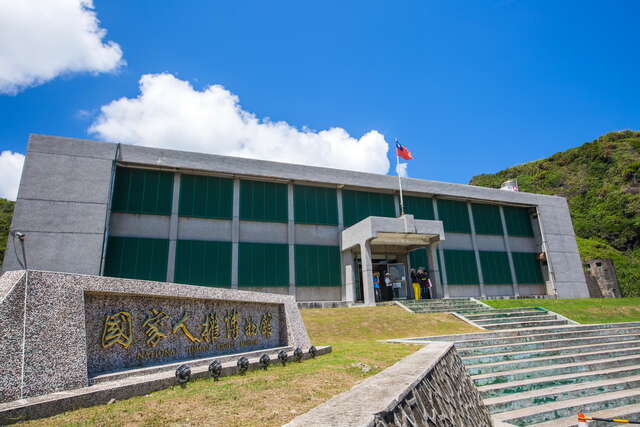National Museum of Human Rights - Green Island White Terror Memorial Park Introduction
The "White Terror Green Island Memorial Park" was originally named "Green Island Human Rights Culture Park." It is located at No. 20 Jiangjun Rock, Gongguan Village, Green Island Township, Taitung County, covering an area of about 32 hectares, situated at the northeastern corner of Green Island. The park has experienced different periods of prison culture, including the Fire Island Floating Refugees Shelter, the New Life Guidance Center, and the Oasis Mountain Villa, and was a site of significant human rights violations by an authoritarian government. The architectural complex, natural, and ecological landscapes of the entire park reflect the long-term interaction between people and nature, combining various forms of cultural assets and landscapes into a cultural landscape. During the martial law period, the "White Terror Green Island Memorial Park" served as a detention site for military, political, and public security cases; from 1951 to 1970, it functioned as the New Life Guidance Center, and from 1972 to 1987 as the Oasis Mountain Villa (Ministry of National Defense Rehabilitation Prison period). Oasis Mountain Villa was built in response to the 1970 Taiyuan Incident as a high-walled closed prison, which differs significantly from the spatial form of the New Life Guidance Center. The "White Terror Green Island Memorial Park" holds special significance in the history of Taiwan's struggle for human rights. Each era has its own helplessness and sorrow; the park was born in a politically sensitive time, previously used solely for the imprisonment of political and thought prisoners. The "White Terror Green Island Memorial Park" is located in front of Jiangjun Rock in Gongguan Village on Green Island and covers a vast area, encompassing Jiangjun Rock, the Human Rights Memorial Park, Oasis Mountain Villa, and Zhuangjing Camp. Among these, the Oasis Mountain Villa and the New Life Guidance Center were places for reform education and ideological transformation. Upon entering the park, one can feel the heavy and oppressive atmosphere of that time, making it a great place to learn about the history of Taiwan's White Terror and human rights development. Oasis Mountain Villa was previously the Green Island Rehabilitation Prison of the Ministry of National Defense. After its completion in 1972, political prisoners from Taiyuan Prison and various military prisons were transferred here, preserving the tall walls, barbed wire, playground, auditorium, octagonal building, solitary confinement cells, and 52 small and large prison cells of the past. To the right of the entrance of the Oasis Mountain Villa is a passage called the "Ghost Gate," which was once a necessary route to enter the villa. Passing through the Ghost Gate means entering the Oasis Mountain Villa, implying a bleak chance of survival. Inside Oasis Mountain Villa, many historical materials related to the White Terror period are displayed. The narrow prison and the dark, heavy atmosphere still linger even years later. The New Life Guidance Center was established in the early 39th year of the Republic of China (1950) due to overcrowding of political prisoners in prisons across Taiwan, with most being sent to Green Island for endless labor and ideological re-education. Thus, the New Life Guidance Center became the largest labor reform concentration camp. The current New Life Guidance Center replicates the past barracks, classrooms, and kitchen. Entering the rooms, one can see lifelike wax figures. In the small dormitory (prison cell), about 120 to 160 people lived, each having to sleep side by side in turns, making it difficult to even turn over. This gives a true sense of their discomfort and unfair treatment at that time. They could only use the short hour before bedtime to write letters, play chess, or practice the violin or Huqin, briefly releasing the pressure on their minds and bodies. The Human Rights Memorial Park features a monument and uneven grasslands designed to symbolize the dark period and unequal treatment buried beneath the ground. The Human Rights Monument represents the pursuit of freedom from fear in the new era, and its construction began on International Human Rights Day in 1999 (the 88th year of the Republic of China), also known as the "Green Island Tear Monument." Its spiral structure collects rainwater from the surrounding grooves into a central point during rainfall, resembling tears. Next to it is the inscription, called "Tear Monument." It contains the famous words of writer Bo Yang: "In that era, how many mothers cried long nights for their children imprisoned on this island." These concise 28 characters express the suffering of that time.

























